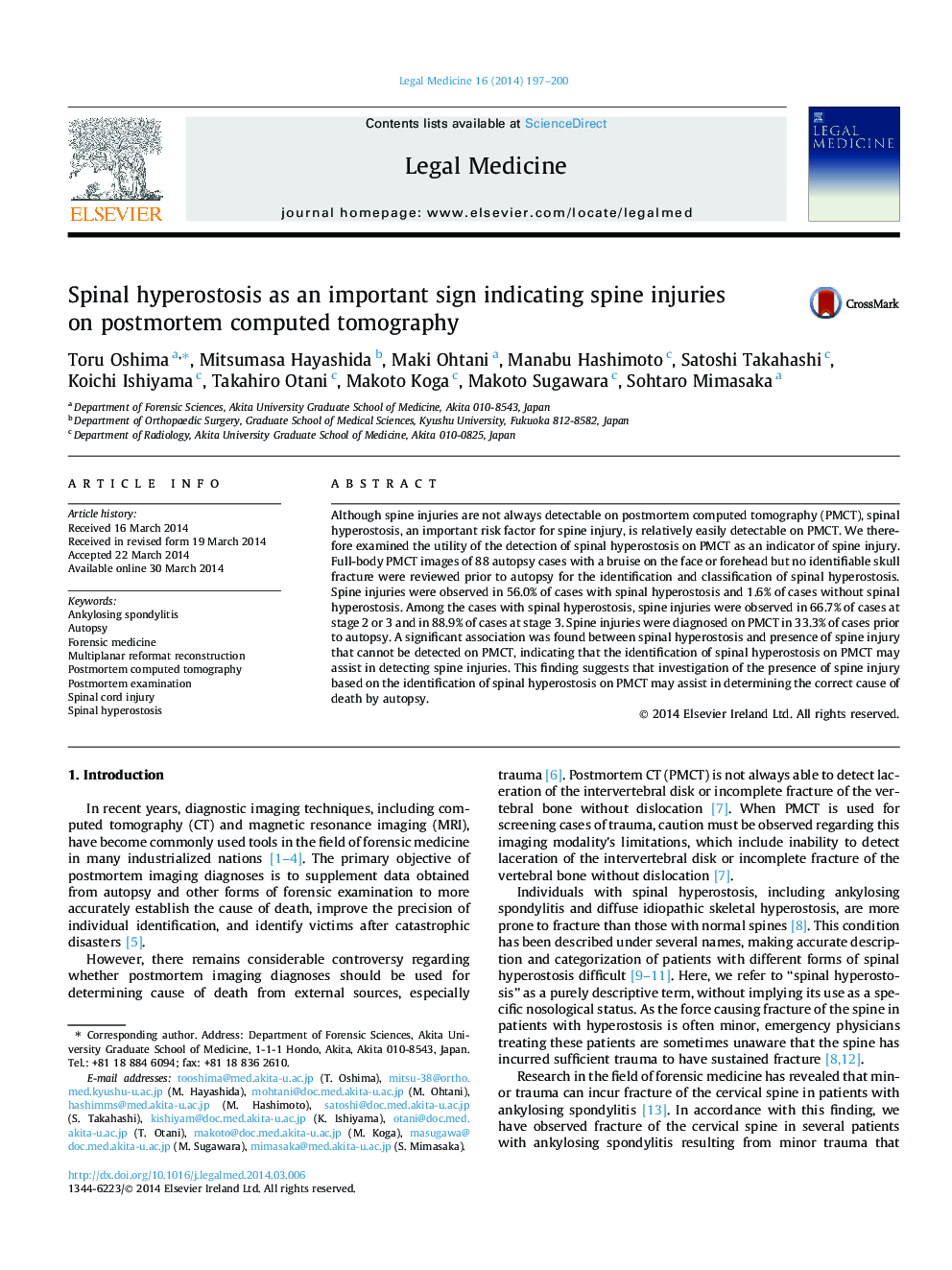| Article ID | Journal | Published Year | Pages | File Type |
|---|---|---|---|---|
| 103565 | Legal Medicine | 2014 | 4 Pages |
•Postmortem computed tomography (PMCT) is not always able to detect spine injuries.•Spinal hyperostosis is an important risk factor of spine injuries.•Spinal hyperostosis and spine injuries not detectable by PMCT are associated.•Spinal hyperostosis found using PMCT can help to detect spine injuries.•Spine injuries must be confirmed by autopsy.
Although spine injuries are not always detectable on postmortem computed tomography (PMCT), spinal hyperostosis, an important risk factor for spine injury, is relatively easily detectable on PMCT. We therefore examined the utility of the detection of spinal hyperostosis on PMCT as an indicator of spine injury. Full-body PMCT images of 88 autopsy cases with a bruise on the face or forehead but no identifiable skull fracture were reviewed prior to autopsy for the identification and classification of spinal hyperostosis. Spine injuries were observed in 56.0% of cases with spinal hyperostosis and 1.6% of cases without spinal hyperostosis. Among the cases with spinal hyperostosis, spine injuries were observed in 66.7% of cases at stage 2 or 3 and in 88.9% of cases at stage 3. Spine injuries were diagnosed on PMCT in 33.3% of cases prior to autopsy. A significant association was found between spinal hyperostosis and presence of spine injury that cannot be detected on PMCT, indicating that the identification of spinal hyperostosis on PMCT may assist in detecting spine injuries. This finding suggests that investigation of the presence of spine injury based on the identification of spinal hyperostosis on PMCT may assist in determining the correct cause of death by autopsy.
